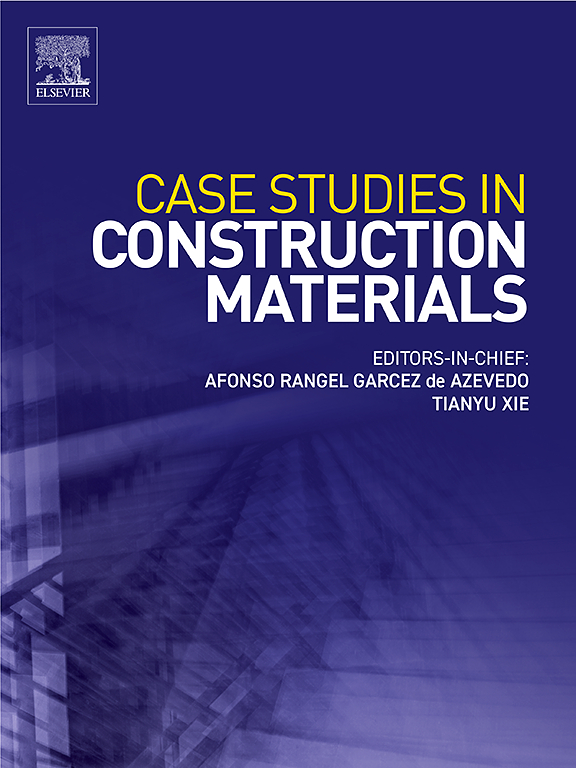更新内部固化HPC使用孔隙调节煤骨料
IF 6.6
2区 工程技术
Q1 CONSTRUCTION & BUILDING TECHNOLOGY
引用次数: 0
摘要
提出了一种基于孔隙调节煤矸石骨料的高性能混凝土内部养护方法。采用煅烧(200-400 °C)对聚丙烯酸酯的孔结构进行调控,以达到最佳孔结构。对聚丙烯酸酯的孔隙结构、形貌、吸水性和解吸水性进行了测试。研究了它们对高性能混凝土的流动性、内部相对湿度、自收缩、抗压强度、微观力学性能和微观结构的影响。结果表明:煅烧显著提高了PCAs的孔隙率(19.57 ~ 34.95 %),特别是在30 nm ~ 1 μm的介孔范围内,PCAs的吸水率提高了29.38 ~ 81.12 %,同时解吸效率也有所提高。PCAs的掺入维持了高水平的HPCs的IRH,并减少了44 - 55% %的自收缩。IC效率的提高促进了更多水化产物的沉积,增强了界面过渡区(ITZ),使孔隙结构更加精细,28d抗压强度提高了1-7.92 %。本文章由计算机程序翻译,如有差异,请以英文原文为准。
Updated internal curing for HPC using pore-regulated coal aggregates
An updated internal curing (IC) method was proposed using pore-regulated coal gangue aggregates (PCAs) for high-performance concrete (HPC). Calcination (200—400 °C) was applied to regulate the pore structure of PCAs to achieve an optimal one. The pore structure, morphology, water absorption, and water desorption of PCAs were tested. Their effects on the fluidity, internal relative humidity (IRH), autogenous shrinkage, compressive strength, micromechanical properties, and microstructure of HPC were studied. The results demonstrated that calcination significantly increased the porosity of PCAs by 19.57—34.95 %, particularly within the mesopores ranging from 30 nm to 1 μm, which led to a 29.38—81.12 % increase in the water absorption capacity of PCAs, as well as the improvement of water desorption efficiency. The incorporation of PCAs sustained the IRH of HPCs at elevated levels and reduced the autogenous shrinkage by 44—55 %. The improved IC efficiency facilitated the deposition of more hydration products and enhanced the interfacial transition zone (ITZ), contributing to refined pore structure and a 1—7.92 % increase in compressive strength at 28d.
求助全文
通过发布文献求助,成功后即可免费获取论文全文。
去求助
来源期刊

Case Studies in Construction Materials
Multiple-
CiteScore
7.60
自引率
19.40%
发文量
842
审稿时长
63 days
期刊介绍:
Case Studies in Construction Materials provides a forum for the rapid publication of short, structured Case Studies on construction materials. In addition, the journal also publishes related Short Communications, Full length research article and Comprehensive review papers (by invitation).
The journal will provide an essential compendium of case studies for practicing engineers, designers, researchers and other practitioners who are interested in all aspects construction materials. The journal will publish new and novel case studies, but will also provide a forum for the publication of high quality descriptions of classic construction material problems and solutions.
 求助内容:
求助内容: 应助结果提醒方式:
应助结果提醒方式:


